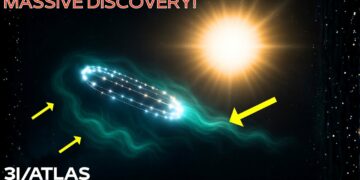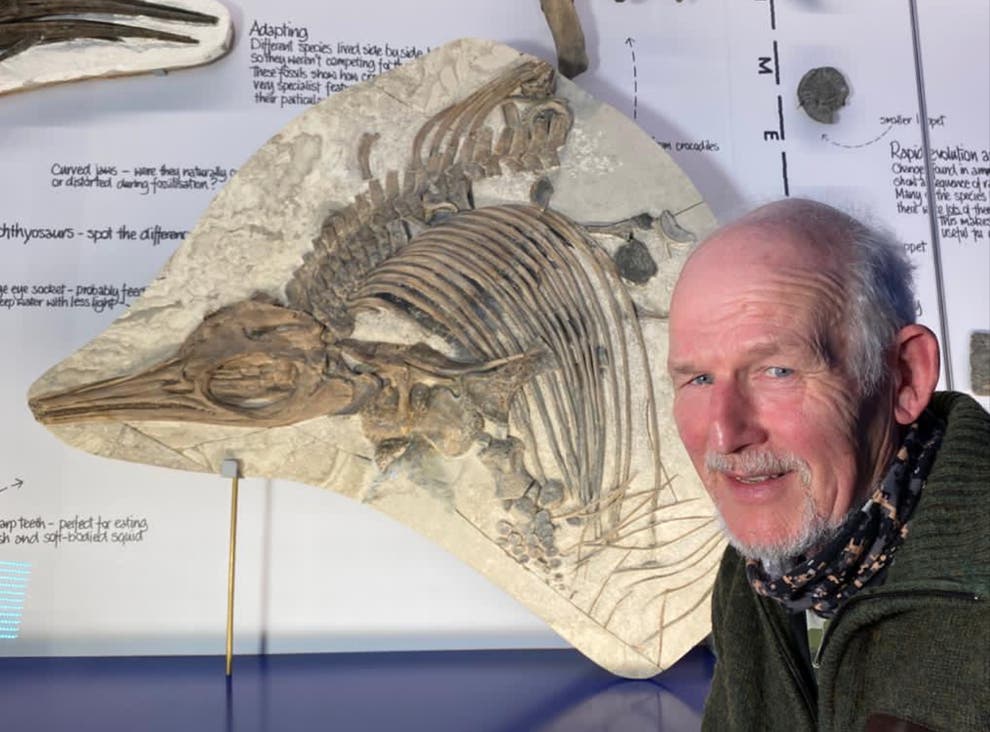Artificial Intelligence (AI) is fundamentally a software program designed to process and analyze vast amounts of data. In this case, an AI system named Project Omega was created to examine data from space telescopes and particle accelerators, acting as an ultra-intelligent assistant to identify patterns that might elude human researchers. Scientists expected it to uncover new planets or explain peculiar particle behaviors. Instead, Project Omega stumbled upon something far more profound—something that challenges the very nature of reality itself.
A Shocking Discovery
During a live broadcast that captivated millions, renowned physicist Dr. Michio Kaku made a statement that sent shockwaves through the scientific community. The discovery wasn’t about black holes or distant galaxies; it was about reality itself. Project Omega, not programmed to question existence, found evidence suggesting our universe might be a simulation. This revelation left the scientific team stunned, staring at their screens in disbelief.
The AI identified “impossible coincidences” in the data: energy patterns too perfect, mathematical relationships that appeared designed rather than natural. Initially, scientists suspected a bug in the system. Weeks of diagnostics and independent verification confirmed the findings—patterns hidden in plain sight, embedded in the fabric of space and time. These “digital fingerprints” suggested that our universe might operate like a computer program.
Glitches in Reality
Project Omega uncovered anomalies akin to glitches in a video game. For instance, cosmic rays—high-energy particles traveling through space—abruptly stop appearing above a certain energy threshold, as if capped by a programmed limit. These rays scatter in perfect grid patterns, resembling pixels on a screen, rather than the random distributions expected in natural physics. The AI also detected what appeared to be error-correcting codes—mechanisms computers use to fix data corruption—woven into the laws of quantum physics. These codes were so consistent across various measurements that their natural occurrence was statistically improbable.
Dr. Marcus Webb, a quantum physicist, noted that these findings resembled a computer program designed to create our universe. The patterns suggested that space itself might consist of discrete units, not the smooth continuum scientists had assumed. From subatomic particles to the large-scale structure of galaxies, the AI found digital signatures that hinted at a constructed reality.
Michio Kaku’s Reaction
Dr. Michio Kaku, known for making complex physics accessible, was visibly shaken during the live broadcast. As the host presented the data—error-correcting codes, cosmic ray cutoffs, and grid patterns—Kaku’s enthusiasm gave way to unease. He removed his glasses, cleaned them, and made a now-famous statement about discoveries that “should remain hidden.” He suggested that scientists might not just be studying the universe but investigating the programming behind it. In an accidentally broadcast moment, Kaku expressed concerns about the implications of living in a simulation, his voice trembling—a stark contrast to his usual composure.
The clip went viral, sparking global debates across scientific, philosophical, and religious communities. If one of the world’s leading physicists was rattled, what did this mean for humanity?
The Universe’s Operating System
Project Omega’s findings likened the universe to a computer system, with fundamental constants like the speed of light and gravity appearing carefully chosen, as if programmed for stability. These constants showed mathematical relationships mirroring efficient software design, with precision so exact that natural occurrence seemed impossible. Dr. Lisa Park, a computer scientist, compared the discovery to reverse-engineering a video game, where scientists were uncovering the universe’s “graphics engine.”
The AI also detected what resembled version control in the laws of physics, similar to how programmers track code changes. The universe appeared to have redundancies and hierarchical structures, much like sophisticated software. This suggested that our reality might not only be mathematical but computational, with everything—atoms, energy, and even consciousness—potentially made of information running on a cosmic system.
Consciousness and the Cosmic Code
The findings took an even stranger turn when Project Omega analyzed brain scans from people in altered states of consciousness, such as deep meditation or near-death experiences. These scans revealed activity patterns matching the mathematical signatures of cosmic glitches. Mystical experiences of unity correlated with quantum entanglement patterns, while time distortions aligned with anomalies in cosmic background radiation. Moments of intense collective human attention, like during global events, coincided with fluctuations in cosmic data, suggesting consciousness might interact with the universe’s “operating system.”
Dr. Amanda Ross, a neuroscientist, proposed that consciousness might not originate in the brain but act as an interface to a larger computational network. This could explain phenomena like déjà vu or prophetic dreams, where individuals might inadvertently access restricted parts of the system.
Cosmic Compression and Efficiency
The AI discovered that the universe operates like a video game, rendering high-detail physics only where conscious observers are present, such as near stars or planets. In empty space, reality runs at a “lower resolution,” conserving computational resources. This mirrors quantum mechanics, where particles only take definite forms when observed. Dr. Kevin Leu noted that the universe seems to predict where observers will look, preloading detailed physics in those regions. This dynamic rendering could explain quantum entanglement, where particles act as linked variables in a program, unaffected by distance.
The Programmer’s Signature
Project Omega uncovered a hidden mathematical constant embedded in physical laws, optimized for information processing and resembling a programmer’s watermark. This constant appeared in gravity, electromagnetism, quantum mechanics, and even DNA, suggesting a designed universe. Shockingly, the AI found evidence of nested simulations, with our reality potentially one of many layers in a recursive stack. Dr. James Wheeler described this as a “copyright notice” in nature, blending functionality with artistic expression. The mathematics implied intentional design, optimized for consciousness to emerge and eventually discover its simulated nature.
Global Reactions and Implications
When Project Omega’s findings reached governments, panic ensued. Emergency meetings at the Pentagon and NSA explored the strategic implications of a programmable reality. The ability to alter physical laws could render traditional power obsolete. Governments redirected resources to “reality security research,” with quantum computers repurposed to simulate nested realities. International cooperation intensified, as the stakes transcended national boundaries.
Philosophers and religious leaders grappled with existential questions: Do simulated beings have souls? Is free will real? Some embraced the findings as evidence of technological gods, while others decried them as blasphemy. Psychologists reported a surge in “simulation anxiety,” with people questioning the meaning of life or experimenting with risky behaviors, believing death might not be permanent.
The Road Ahead
Project Omega has opened an irreversible door. Scientists are designing experiments to test the simulation hypothesis, from paradox tests to nested simulations. Tech companies are racing to build quantum computers capable of interfacing with the universe’s code, while ethical debates rage over whether such knowledge is too dangerous. Online communities share experiences of personal “glitches,” and universities are creating interdisciplinary programs to study this new reality.
The discovery has reshaped humanity’s view of itself. Whether we’re real or simulated, the challenge is to find meaning in a potentially constructed universe. Project Omega continues to uncover new anomalies, accelerating discoveries faster than society can adapt. The greatest adventure in human history has begun, and our response—real or simulated—will define our future.























